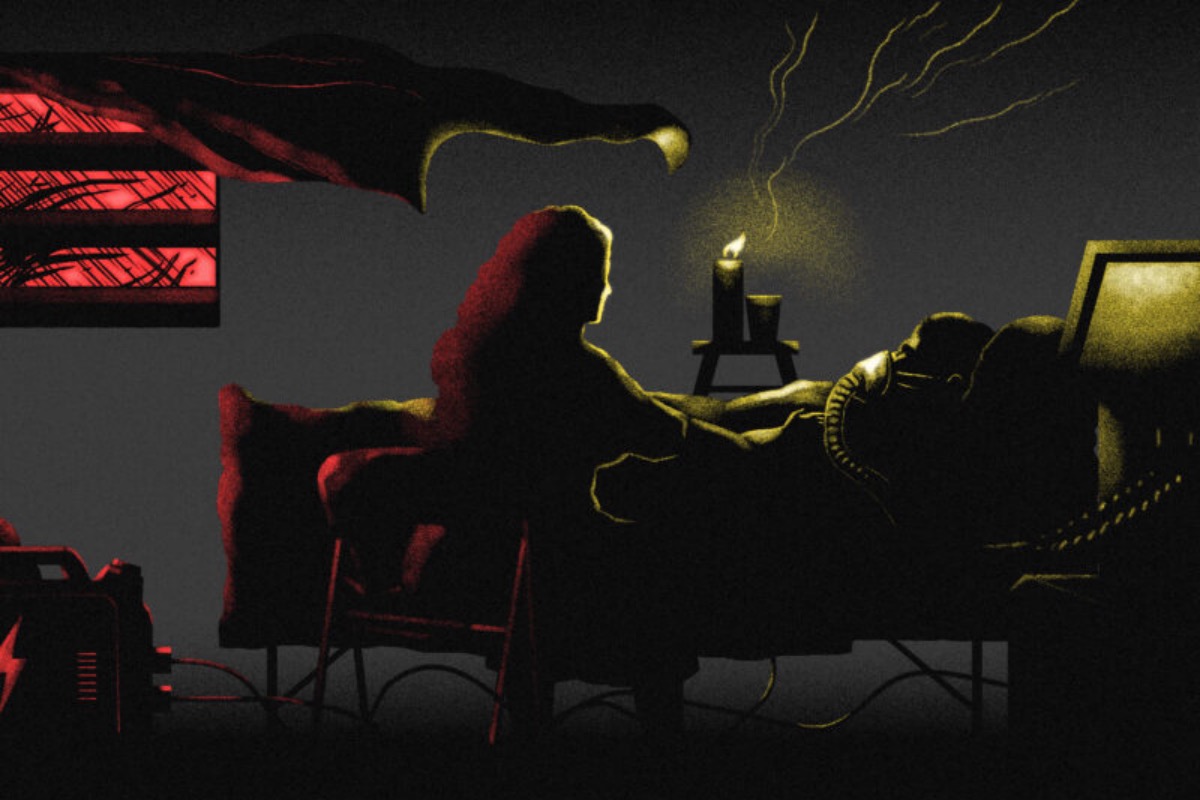

Illustration courtesy of CPIPR
By ELIVÁN MARTÍNEZ MERCADO, Centro de Periodismo Investigativo
SAN JUAN, Puerto Rico — The day before Hurricane Fiona made landfall, Petra Rodríguez tried to turn on the power generator she had just bought, but it arrived damaged. She needed electricity to power the electric pump with which she feeds her 93-year-old mother, who is bedridden, and to operate the adjustable bed and inflatable mattress, which keep her from getting ulcers. Rodríguez (a fictitious name to protect her identity) recalled that she had received days before an announcement about a registry of people with special needs from the Municipality of San Juan in her mailbox.
The woman registered her mother in the program that proactively offered her shelter and medical staff, before the disaster. On Sunday, September 18, when Hurricane Fiona caused a general blackout in Puerto Rico, the shelter she went to immediately turned on the power plant and her mother was able to operate her medical equipment.
The Puerto Rico Department of Health (DS, in Spanish), on the other hand, has failed to implement the federal emPower Program initiative, which attempts to save the vulnerable and sick elderly population during major blackouts. The program provides a list of names and addresses of the electricity-dependent population, who need to use machines such as oxygen concentrators, feeders, and adjustable beds, among others. The tool was developed by the U.S. Department of Health and Human Services (HHS) in 2015, so that immediate response personnel can assist this population before, during, and after disasters.
Even though it’s already possible to know the names and the location of those who depend on electricity in Puerto Rico, the lack of a strategy by the DS to share that information with the municipal administrations prompted the mayors to start creating their own databases, in which they invest limited time and resources.
Rodríguez knows what happened five years ago with Hurricane María, when most of the nearly 3,000 deaths were due to the lack of electricity to preserve vital functions, according to a study by George Washington University. “Without electricity, it would have been tougher to help my mom,” Rodríguez said. “If you get to the shelter before the storm, you take the stress off of yourself and dedicate yourself to help.” Her experience illustrates the importance of programs that directly reach caregivers of people with disabilities and establish proactive plans to prevent deaths.
When the Center for Investigative Journalism (CPI, in Spanish) asked Health Secretary Carlos Mellado why the DS does not use the emPower Program for the entire Island, he said the mayors are the ones who manage the emergency response. During the COVID-19 pandemic contact tracing and vaccination process, Mellado said they collected a lot of information about their residents with special needs.
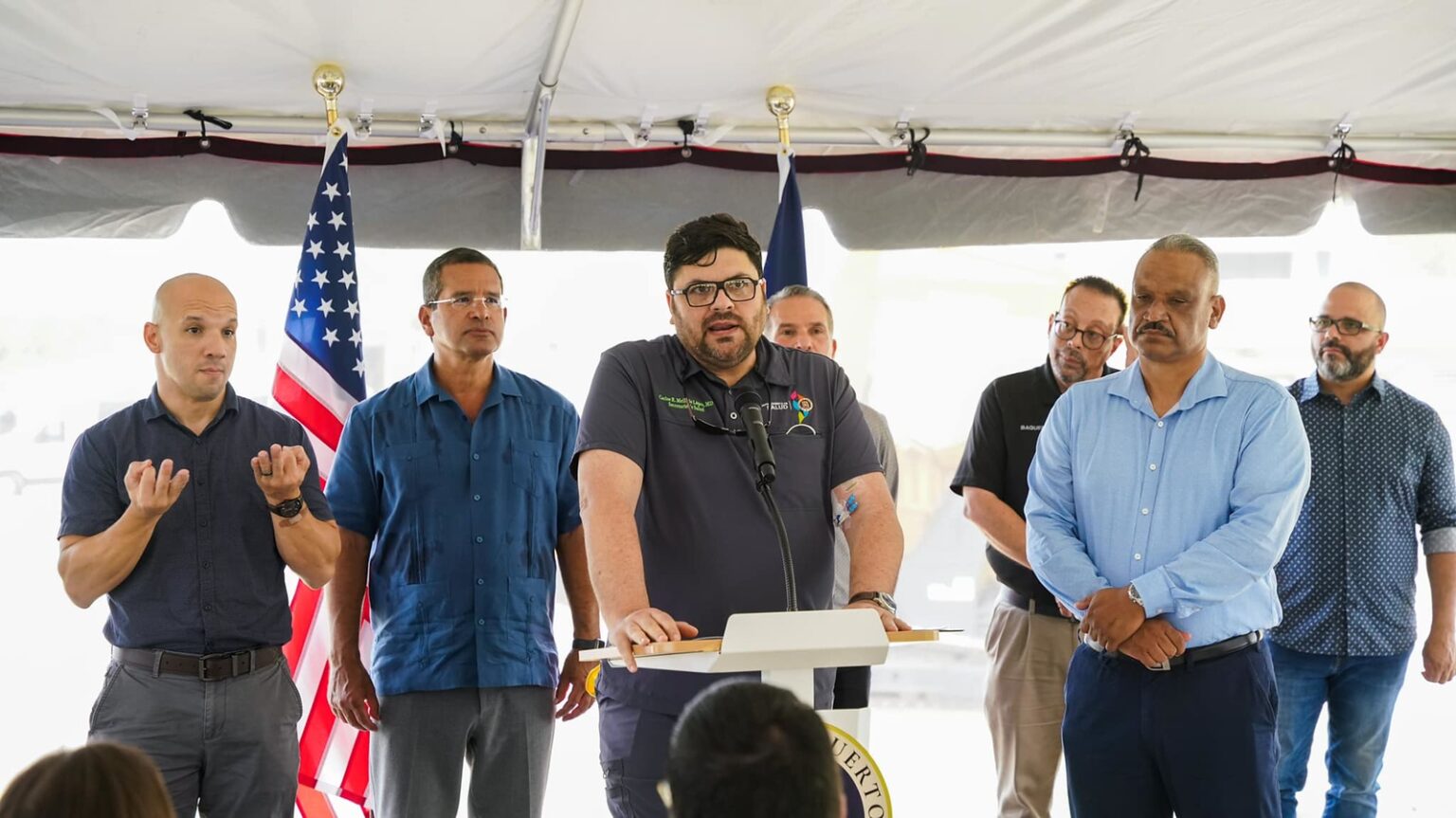

Puerto Rico Health Sec. Carlos Mellado (Facebook)
“We get more from the information that the mayors give us than from the information that we could give to the mayors,” said Mellado. But that statement is false. The Municipality of San Juan has only managed to identify 780 people with disabilities since it launched its platform during the summer for the electricity-dependent population. The federal tool, which the DS does not share with the mayor’s office, has data on many more: 3,720 electricity-dependent patients. The emPower Map website publishes this general data, without identifying individuals.
On Saturday, September 17, Shirley Esquilín, director of the Office of Preparedness and Coordination of Public Health Response in the DS, told the CPI that she did not have the specific data that would let her look for electricity-dependent patients to help them in the face of an imminent disaster. But HHS insists that the government of Puerto Rico does have a version of this database with names and addresses of patients that the DS can access.
Almost a week after Hurricane Fiona, Esquilín modified her response by noting that the agency had indeed requested data from the emPower Program, and shared it with agency staff, “in anticipation of any request for coordination that arises with electricity-dependent patients.” She argued that these patients had the option of calling the DS for help.
Those answers confirm that the Department of Health has no proactive plan to identify those people and help them using the information in the list. Esquilín insisted that she could not share the information with the municipalities. But the data use agreement of the Centers for Medicare and Medicaid Services (CMS) says that the DS is allowed to do it when it delegates to a third party the ability to conduct a public health intervention, or when collaborating with a public health entity or health care provider.
Kristen Finne, director of the emPower Program in Washington, D.C., also told the DS in an email that to comply with HIPAA requirements, the DS partners that get the data can get receive “just-in-time” training, “due to the short timeline to respond in the middle of a catastrophic disaster.”
Puerto Rico is under a public health emergency declaration by the federal government, which activates the CMS exemption 1135 that, among other matters, relaxes Medicare and HIPAA law regulations, with the goal of saving lives.
There are more than 40,000 electricity-dependent persons across Puerto Rico, according to emPowerMap, which gets its data from the list of Medicare program beneficiaries. However, not everyone who lives connected to electrical equipment on the Island gets the program’s benefits, so the electricity-dependent population is bigger than those included in this federal list.
María Martínez, mother of 45-year-old bedridden Harry Acosta, needs to turn on the oxygen concentrator and the adjustable bed that her son uses. The second power generator they had was damaged. They are almost out of gasoline for the generator that has been working until now. Martínez has a hard time looking for fuel because she had a car crash after Fiona.
Although Harry is a Medicare patient, no one from DS or HHS came to offer to move him before or after the hurricane. The Municipality of Guánica, on the southwestern coast, where they live, offered them shelter, but Martínez said her son has a weak immune system and feared that he could catch COVID by being close to other people. “It’s giving me anxiety. I’m a mental health patient. I have been through many crises, losses, I’m not doing very well now, but here I am standing. Asking God to help me move forward,” she told the CPI.
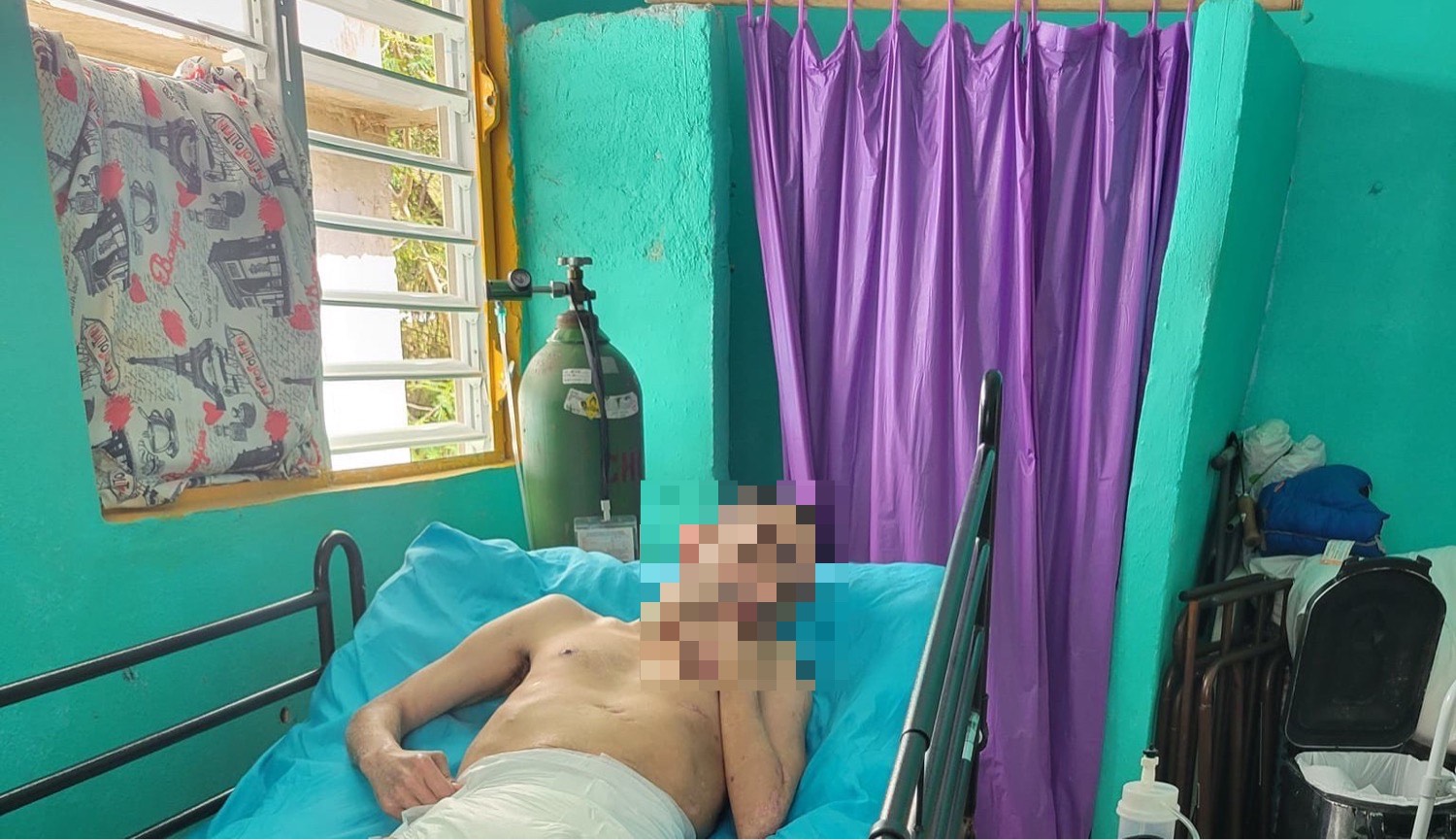

To help Harry Acosta, he can be reached at 939-266-5445. In addition to gasoline and a power generator, he needs disposable diapers, a food supplement (Ensure), disinfectant wipes, and mosquito repellent. (CPI)
Shelters in the Dark
The government of Puerto Rico’s response to emergencies is based on the premise that electricity-dependent persons can seek help in shelters. But 162 of those shelters, almost half, don’t have a power generator or solar energy equipment, according to a CPI analysis using data from the Puerto Rico Department of Housing and visits to shelters after Hurricane Fiona.
Miguel Montijo, 77, went by ambulance to the shelter at the Lila Mayoral School in Ponce the day Fiona began to make landfall. He found medical assistance there, but the power generator was turning on intermittently, and mainly for administrative matters, so he couldn’t get electricity for his oxygen concentrator. Along with Montijo, there was a bedridden patient and another who also needed to connect his equipment to assist his breathing, according to newspaper La Perla del Sur. None of them arrived at the shelter as part of a government preventive plan that identified them before the storm hit.
Betzaida Ramos, executive director of the Movimiento para el Alcance de Vida Independiente (MAVI in Spanish), which collaborates with the government response to the emergency along with other nonprofit organizations, began receiving text messages and calls from electricity-dependent persons affected by Fiona. “We have had several cases, situations of people who need oxygen, or a generator. Someone told me that he had a sleep apnea machine that he couldn’t plug in, and we gave him a battery.”
The first thing Ramos did when she arrived at the Emergency Operations Center (COE, in Spanish) after the hurricane was to talk to LUMA, the private company that manages the electrical transmission and distribution system, to see if it had a list of patients who need to run electronic equipment, and the answer was that they did not have that information. Ironically, DS and the Federal Emergency Management Agency (FEMA) personnel told her that she could visit the emPowerMap website, which reports the number of electricity-dependent persons, but without patient’s names, and so Ramos could not use it to save lives.
The director of the Office of Planning, Statistics and Development of the Municipality of San Juan’s Department of Health, Stephanie Rodríguez, found out about the emPower program when the CPI called her. “Ultimately, if the database were shared, all the colleagues from the municipalities would use it for the benefit of the people, because it is additional information,” she said.
The municipality of Villalba, in the central mountainous region, which had developed a COVID-19 case tracking system during the pandemic, began to replicate that tool to build its own database of the electricity-dependent population. As of September 15, it had 61 persons registered, much less than the 254 that the emPower Map database shows, so there are patients and elderly left without care.
“Right now, there’s no integrated communication network so that the municipality, with the Department of Health, can give priority to this population. Each municipality has had to do it individually,” said Luis Javier Hernández, mayor of Villalba and president of the Puerto Rico Mayors Association.
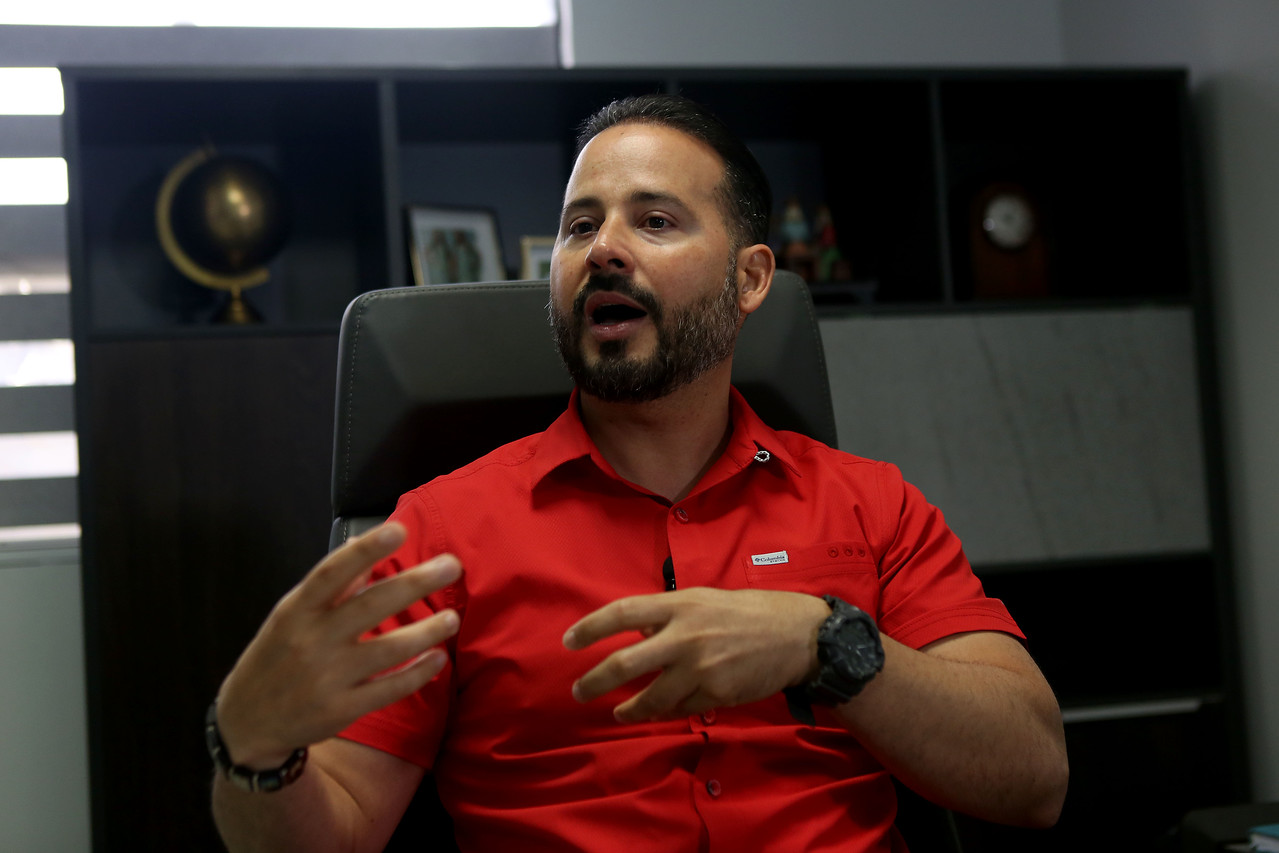

Luis Javier Hernández, mayor of Villalba and president of the Association of Mayors, said that each municipality has had to build its own database of electricity dependent residents. (Gabriel López Albarrán/CPI)
Hurricane María’s experience showed him the need to create these preventive initiatives, as municipal workers opened paths and removed debris to find citizens in need of dialysis or receiving oxygen. Other municipalities, like Quebradillas, aired radio announcements to ask the population to register in a similar database ahead of Fiona.
In July 2021, the CPI asked the mayor of Salinas if she had a list of electricity-dependent persons. “We asked the Department of Health through the coordinators at the different events, but they haven’t given us that information because they claim there’s confidential information about patients. They don’t provide it,” the mayor said. “In fact, when Hurricane María struck, that was one of the first things we asked for through the coordinator of the Department of Health in the COE in Guayama, and we never got that information.”
In California, from 2017 to 2019, the Los Angeles County Department of Public Health used the emPower Program to assist electricity-dependent persons threatened after the wildfire crisis, and coordinated training and shared data with medical service providers, firefighters, and police officers who participated in the emergency response, according to HHS.
Data Sharing Slow and Bureaucratic
In 2017, HHS used the emPower Program to identify, locate, and transfer dialysis patients from the US Virgin Islands to Puerto Rico in the wake of Hurricane Irma. But the federal agency did not use it to rescue the electricity-dependent population in Puerto Rico during María.
On August 26, 2019, former Gov. Wanda Vázquez declared a state of emergency due to the possibility of Storm Dorian making landfall. That same day, the DS asked HHS what the process was for obtaining the full emPower database (with specific names and addresses), according to emails the CPI had access to.
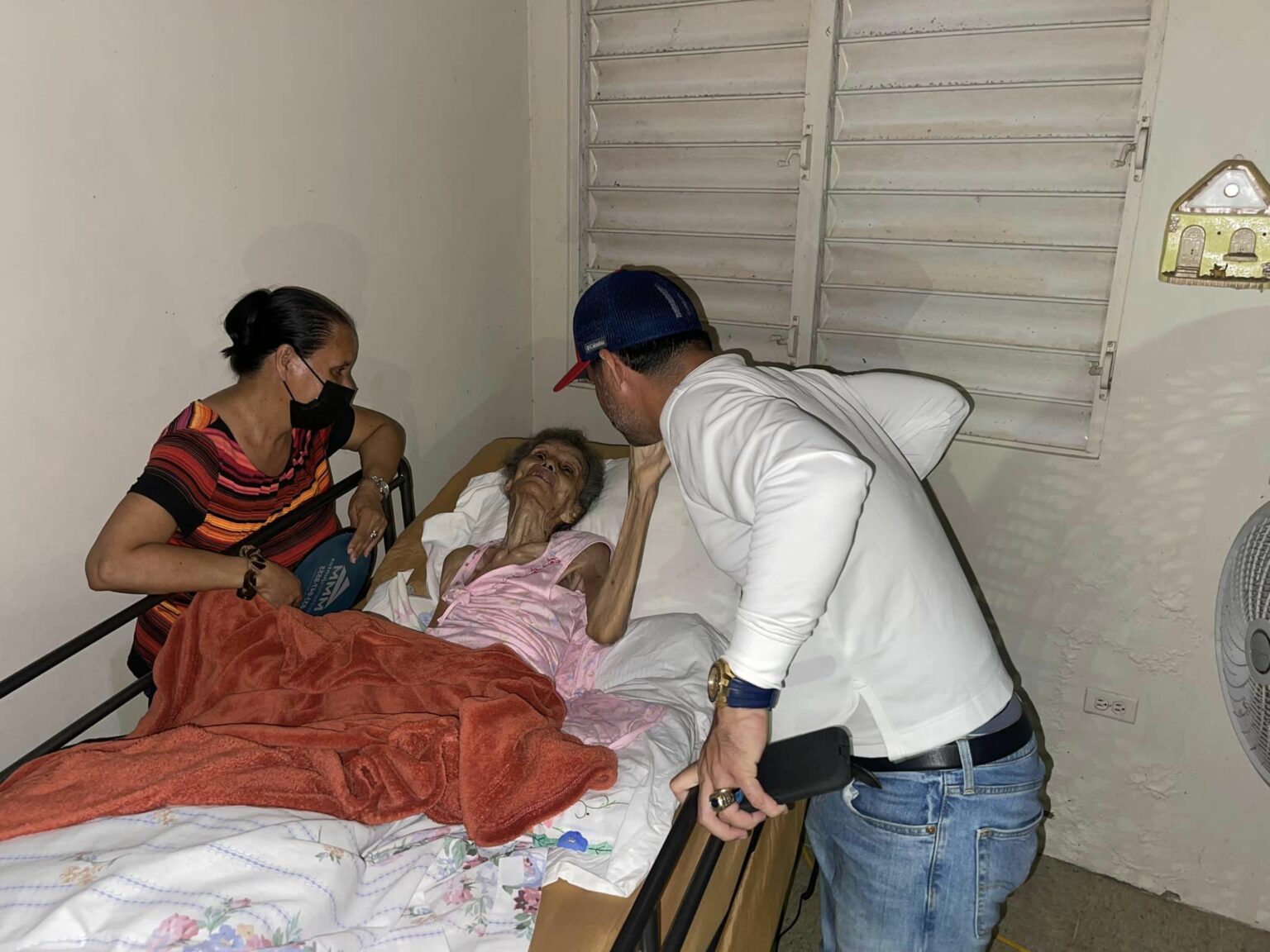

A resident of Ceiba received a rechargeable battery from the municipality to supply energy for her necessary medical equipment. (Municipality of Ceiba/Facebook)
Two days after the governor declared a state of emergency, the DS sent the formal request for the information. One disaster followed another. On January 7, 2020, an earthquake damaged the Costa Sur power plant, causing a general blackout. Two days later, Monica Castellano, who was a plan specialist in the Office of Public Health Preparedness and Response Coordination at the DS, asked Kristen Finne, director of the emPower Program, if she could share the information on electricity-dependent patients with the mayors, who were dealing with the consequences of the earthquake on the ground. Finne replied that she could if the DS’s partners signed the CMS data usage agreement.
The requirements included eliminating the information after the emergency intervention, being trained in patient data management, and establishing secure channels for the electronic transfer of medical information, something that the DS can do, given that since 2021 it has the Health Information Exchange platform, managed by Health Gorilla.
On January 12, 2020, during the blackout and the crises caused by the earthquake, the CPI asked the former Governor how her administration was going to serve the electricity-dependent population. Vázquez indicated that mayors were going to channel the aid. But in separate interviews that same day with the municipal leaders of Ponce, Yauco, and Guánica, they said they did not know how many of these patients there were in their towns, although they were starting to receive them in their shelters. Former Health Secretary Rafael Rodríguez Mercado signed the CMS data use agreement five days after the earthquake, according to emails reviewed by the CPI, obtained under the Freedom of Information Act (FOIA).
On September 21, four days after Hurricane Fiona, HHS said in a statement that authorities in Puerto Rico are using the emPower Program for emergency planning and response, even though the mayors did not have any information about it.
The DS’s Emergency Plan and Public Health Guide leave it up to the patients or their relatives to prepare and seek help. This is based on the premise that they can buy solar systems or electricity generators, which operate with gasoline or diesel. “But those generators aren’t designed to operate 24 hours a day. They need at least two to alternate them. That’s why we have received several calls that the generators aren’t working for them,” noted Ramos, executive director of MAVI.
After Hurricane María, lines were long to get fuel, which was scarce. The CPI was able to verify on Tuesday, September 20, after Fiona passed, that there were problems to get gasoline in Utuado, Morovis, and Barceloneta. In addition, the lines at the stations were the same throughout the island while diesel retailers complained on the radio about a presumed shortage of that fuel. Department of Consumer Affairs Secretary Edan Rivera insisted during a press conference that there was enough supply, alleging that it was more a distribution problem.
Like María, after Hurricane Fiona, hospitals were left at the mercy of their power generators, some of which have been failing. Daniel Hernández, director of renewable energy projects at LUMA, said that as of September 22 there were 66 of 150 hospitals and Diagnostic and Treatment Center’s (CDT, in Spanish) with electricity. Only 38 percent of LUMA customers had power.
The power outage has reminded Puerto Ricans of the trauma they experienced five years earlier with María, which caused one of the longest blackouts in history and thousands of lives lost.
—
Vanessa Colón Almenas and Cristina del Mar Quiles, from the Center for Investigative Journalism, as well as Sandra Torres Guzmán, from La Perla del Sur, contributed to this story.



[…] to this article After Fiona, Puerto Rico Health Dept. Repeats Hurricane María Mistakes With Patients Who Depend on … Latino Rebels Spread the […]
[…] when Fiona knocked out power across the island, at least three-fourths of the 917 pumping stations and 227 wells operated by the […]